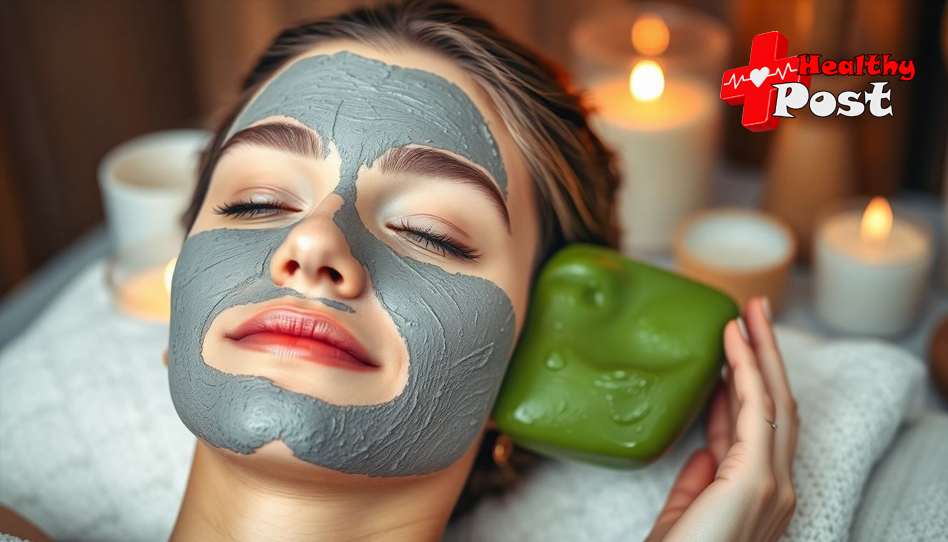
Mud Mask vs Clay Mask: Which Is Best for Your Skin? A Comprehensive Comparison
Everyone loves a good skincare routine. Masks are a favorite step because they give your skin that extra boost of clean, glow, and refresh. Lately, mud and clay masks have gained popularity for their natural benefits and easy use. Picking the right mask depends on your skin type and goals. Want to know which one suits your skin best? This article covers Mud Mask vs Clay Mask, benefits, drawbacks, and tips to get the most out of each mask.
What Are Mud Masks and Clay Masks? An Overview
Definition and Composition of Mud Masks
Mud masks are made from mineral-rich mud, often sourced from unique natural places like the Dead Sea or volcanic regions. These masks are packed with nutrients that can feed your skin. They usually contain a mixture of water, mud, and sometimes natural extracts. The key feature? They’re loaded with minerals like magnesium, calcium, and potassium that benefit your skin.
Definition and Composition of Clay Masks
Clay masks are made from various types of natural clay, like kaolin, bentonite, or French green clay. These clays are known for their strong absorbent qualities. They’re mainly made of fine clay particles mixed with water or other ingredients to form a smooth paste. Clays are rich in minerals but are especially prized for their ability to draw out impurities.
How They Differ Chemically and Texturally
Mud masks tend to be thicker, a bit gritty, and sometimes have a moist, clay-like texture. They offer gentle nutrients that nourish while cleansing. Clay masks, on the other hand, are usually smooth and more powdery, with a drier feel. Chemically, mud masks hydrate and mineralize, whereas clay masks are more about absorbing excess oil and cleaning pores.

Key Benefits of Mud Masks
Nourishing and Mineral-Rich Properties
Mud masks provide a natural dose of essential minerals. These nutrients help strengthen the skin and improve its overall health. They can leave your skin feeling softer, more elastic, and healthier-looking after use.
Suitable for Certain Skin Types
People with dry or sensitive skin might find mud masks especially helpful. They hydrate while soothing irritation, making skin feel refreshed, not stripped. Mud’s gentle minerals help calm redness or dry patches.
Additional Skin Benefits
Besides hydration, mud masks can improve skin’s elasticity and reduce inflammation. They help your skin get rid of toxins and can even give a brighter complexion over time.
Key Benefits of Clay Masks
Highly Absorbent and Detoxifying
Clay masks are champions at deep cleaning pores. They draw out dirt, excess sebum, and pollution that can clog your skin. This makes them perfect if you want a “refresh” boost or deal with blackheads.
Suitable for Oily and Acne-Prone Skin
If your skin produces lots of oil or if you battle breakouts, clay masks are your friends. They balance sebum levels and prevent new acne from forming. Regular use can minimize the appearance of large pores.
Additional Skin Benefits
Clay masks tighten your skin and make pores look smaller. This creates a smooth, matte finish that many people love. They also help control shine, especially during hot weather or humid days.
Differences in Application and Usage
Preparation and Application Process
Applying a mud mask is pretty straightforward. Spread a thick layer over clean skin, wait 10-15 minutes, then rinse off with warm water. For clay masks, mix powder with water first, then apply evenly. Duration is similar—most masks should stay on for about 10-15 minutes.
Frequency of Use
That depends on your skin type. Dry or sensitive skin can use mud masks once a week. Oily or acne-prone skin may benefit from 2-3 times weekly with clay masks. Overdoing masks can irritate skin, so moderation is key.
Removal Techniques
Use lukewarm water to gently wash away the mask. Avoid scrubbing hard. After removal, pat dry and follow with moisturizer. Always remember, hydration is important after deep cleansing.

Potential Drawbacks and Precautions
Possible Skin Reactions
Some ingredients in mud or clay masks may trigger allergies. If you notice redness or burning, stop using the mask. Always do a patch test first on a small skin patch.
Limitations Based on Skin Type
Mud masks might be too rich for very oily skin, and clay masks can dry out sensitive or dry skin if used too often. Knowing your skin’s needs will help you choose wisely.
Tips for Safe Use
Patch testing helps avoid skin reactions. Don’t overuse masks—two times a week is plenty. Also, avoid applying masks on broken or irritated skin.
Expert Insights and Recommendations
Dermatologists’ Views on Mud and Clay Masks
Experts agree that both masks can boost your skincare if used correctly. Mud masks are great for nourishing and calming, especially for sensitive skin. Clay masks are best for dealing with excess oil and deep cleaning, especially for oily skin.
Selecting the Right Mask for Your Skin Type
If you have dry or delicate skin, try a mud mask with soothing ingredients. For oily skin or acne, a clay mask helps control shine. You can even alternate between them, depending on your skin’s needs.
Actionable Tips for Maximizing Benefits
- Always start with a clean face before applying any mask.
- Use a gentle cleanser to remove dirt and oil beforehand.
- Apply masks in a well-ventilated area and relax during the wait.
- Follow up with a hydrating moisturizer after removing the mask.
- Use sunscreen daily to protect skin after deep cleansing.
Conclusion
Mud masks and clay masks both have unique advantages. Mud masks nourish and soothe, ideal for dry and sensitive skin. Clay masks offer powerful detoxifying and oil-controlling effects, perfect for oily or acne-prone skin. Trying both can help you figure out what your skin truly needs. Listen to your skin’s signals and adjust your routine accordingly. Whether you choose mud, clay, or both, they can be valuable tools in your skincare arsenal. Experiment, enjoy, and keep your skin happy!

